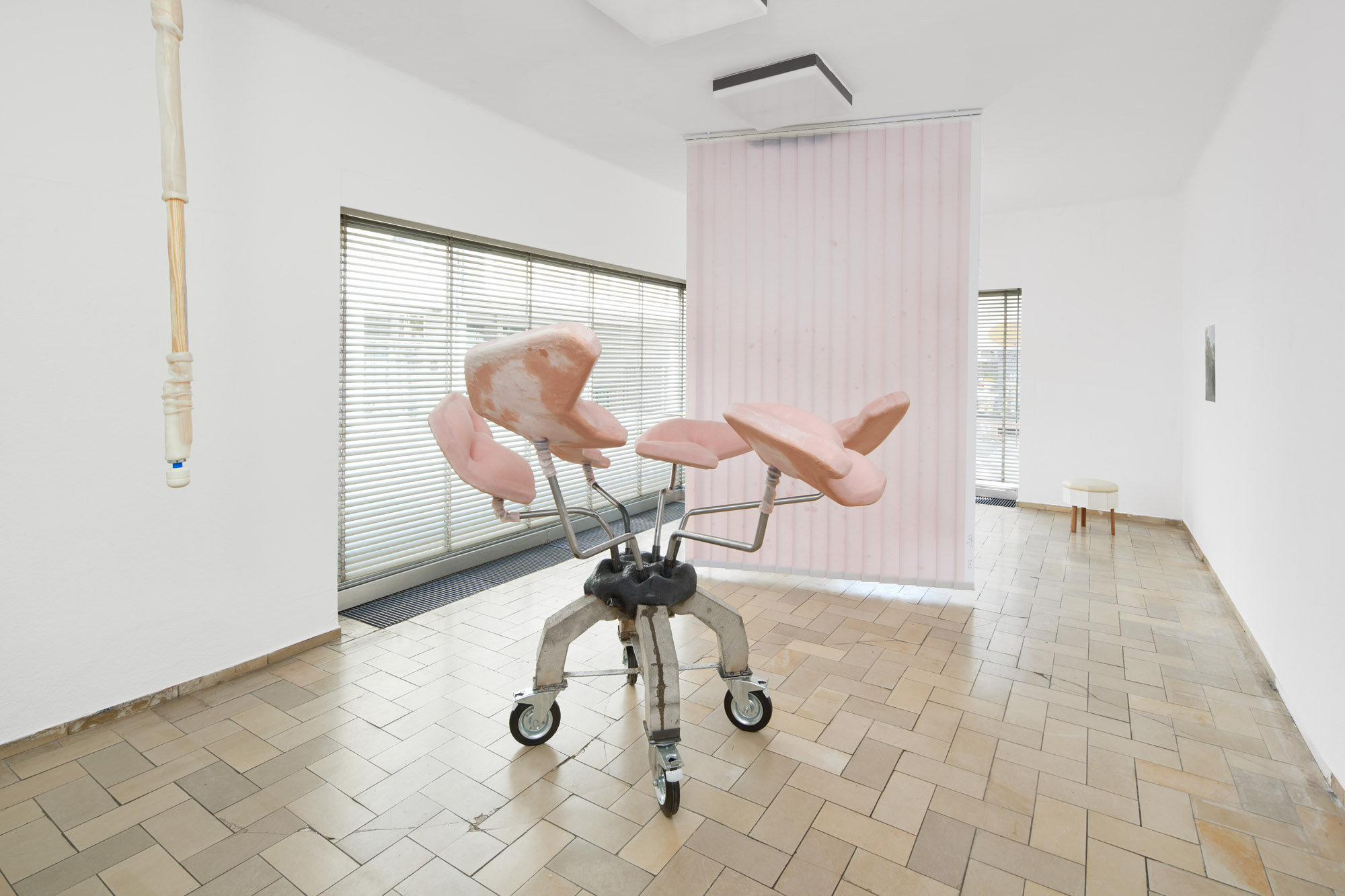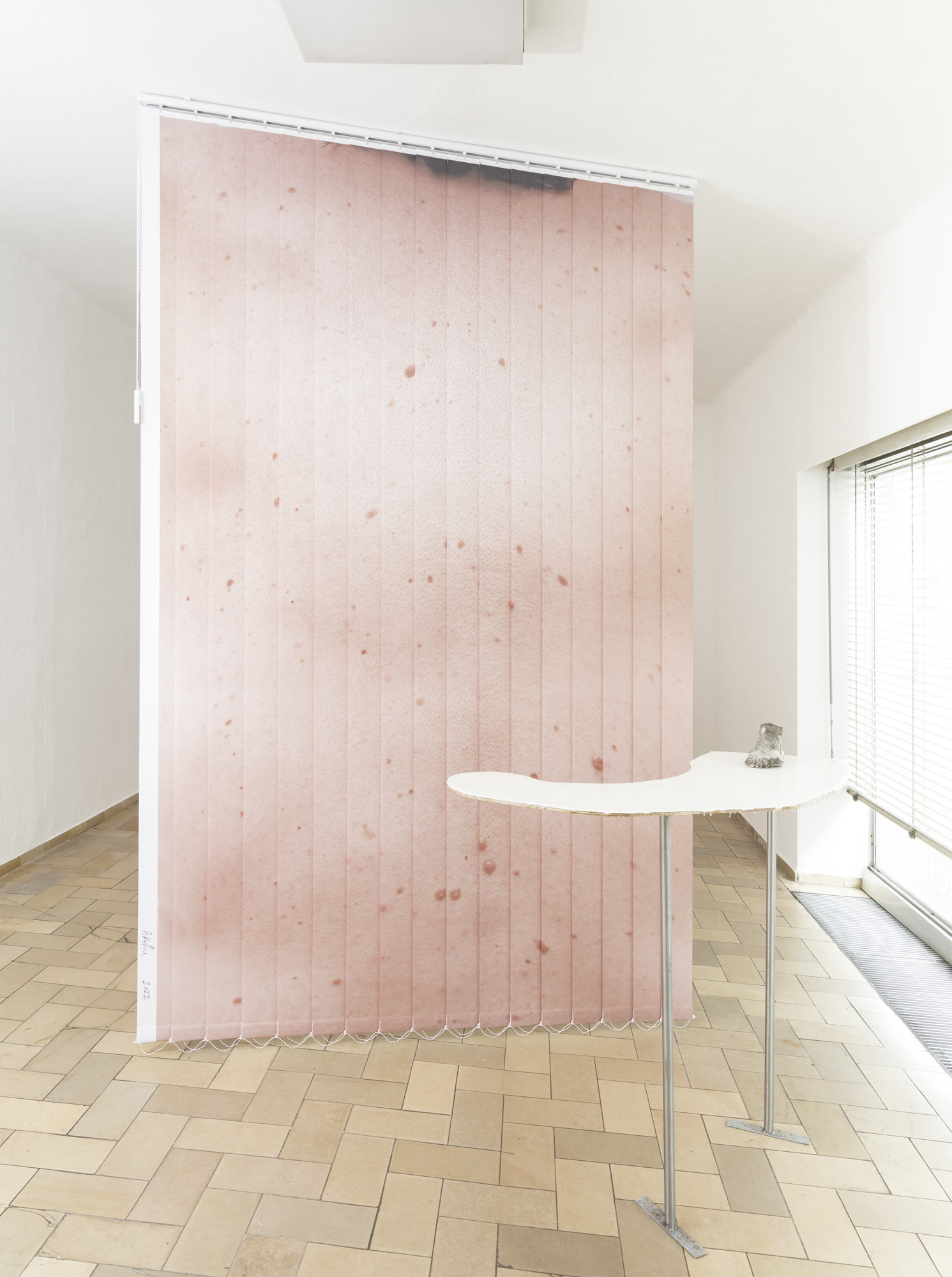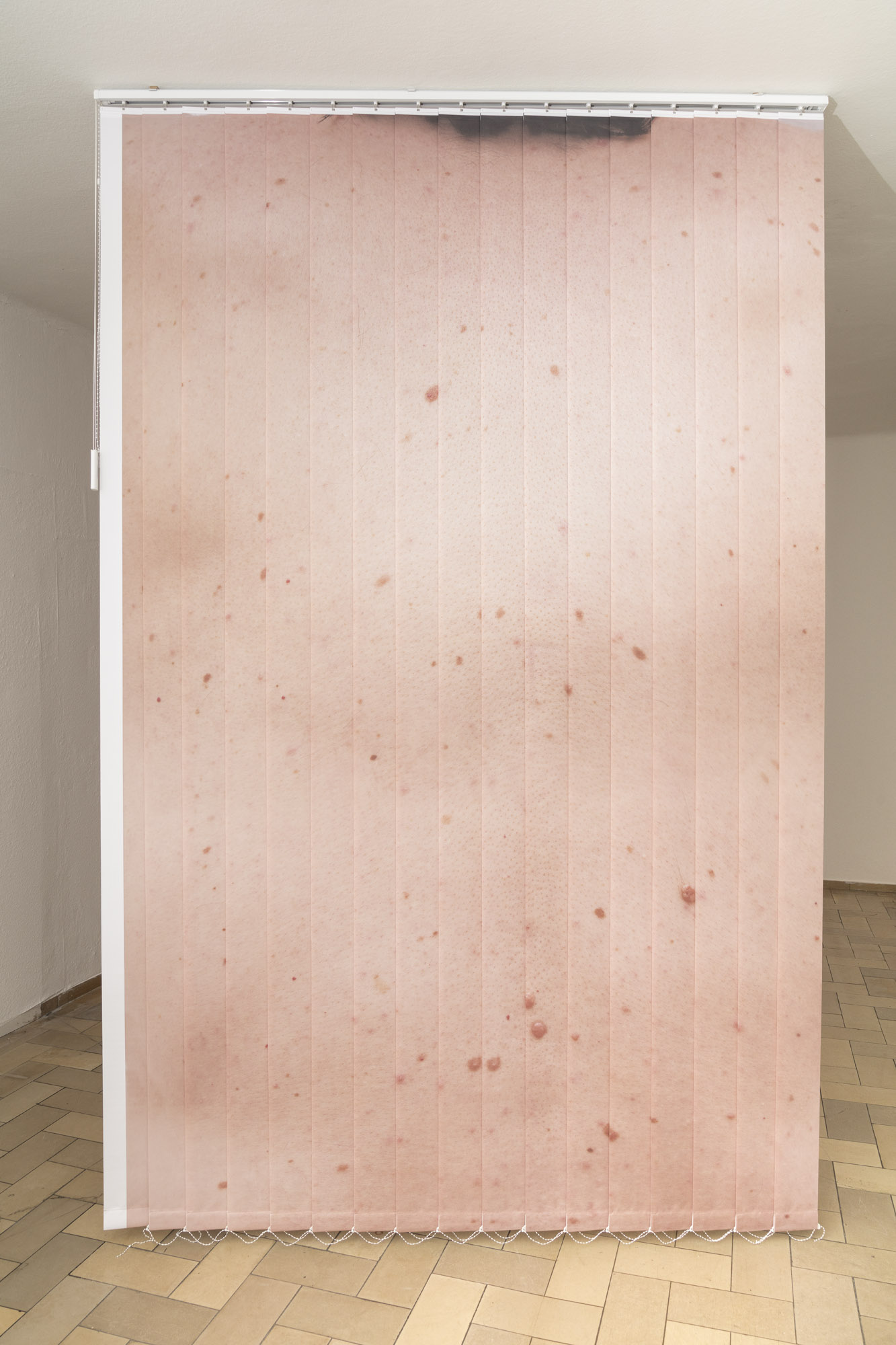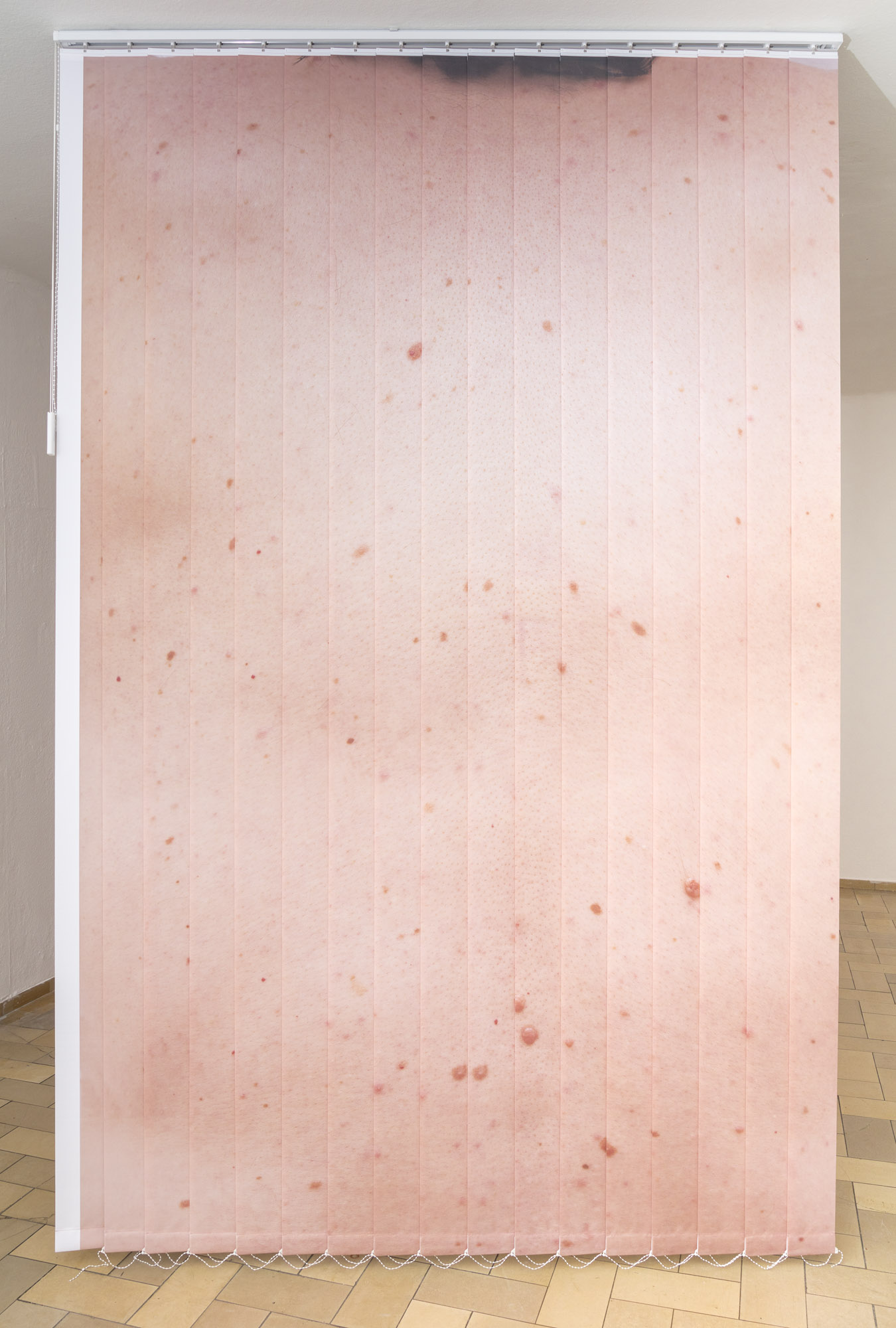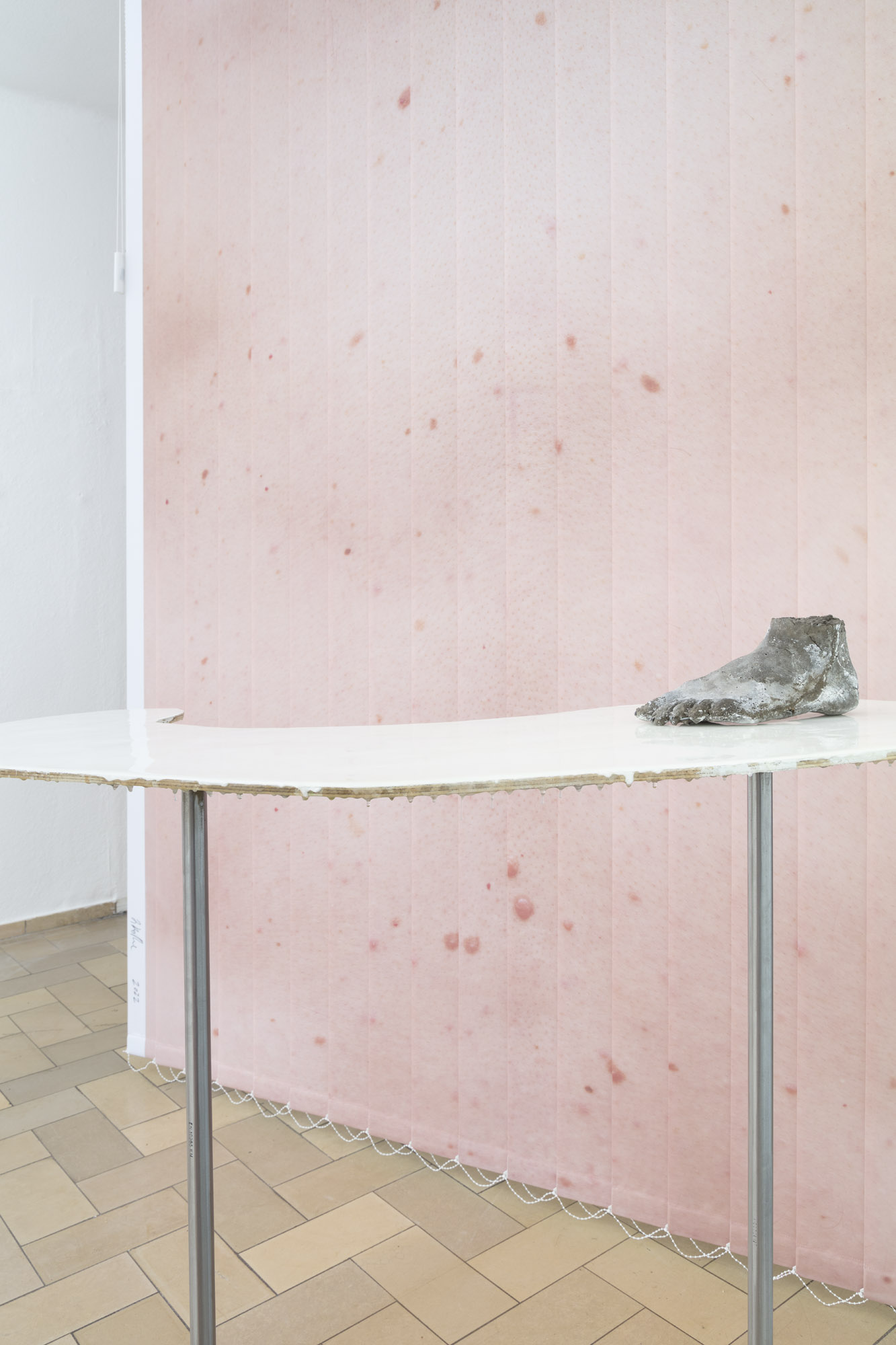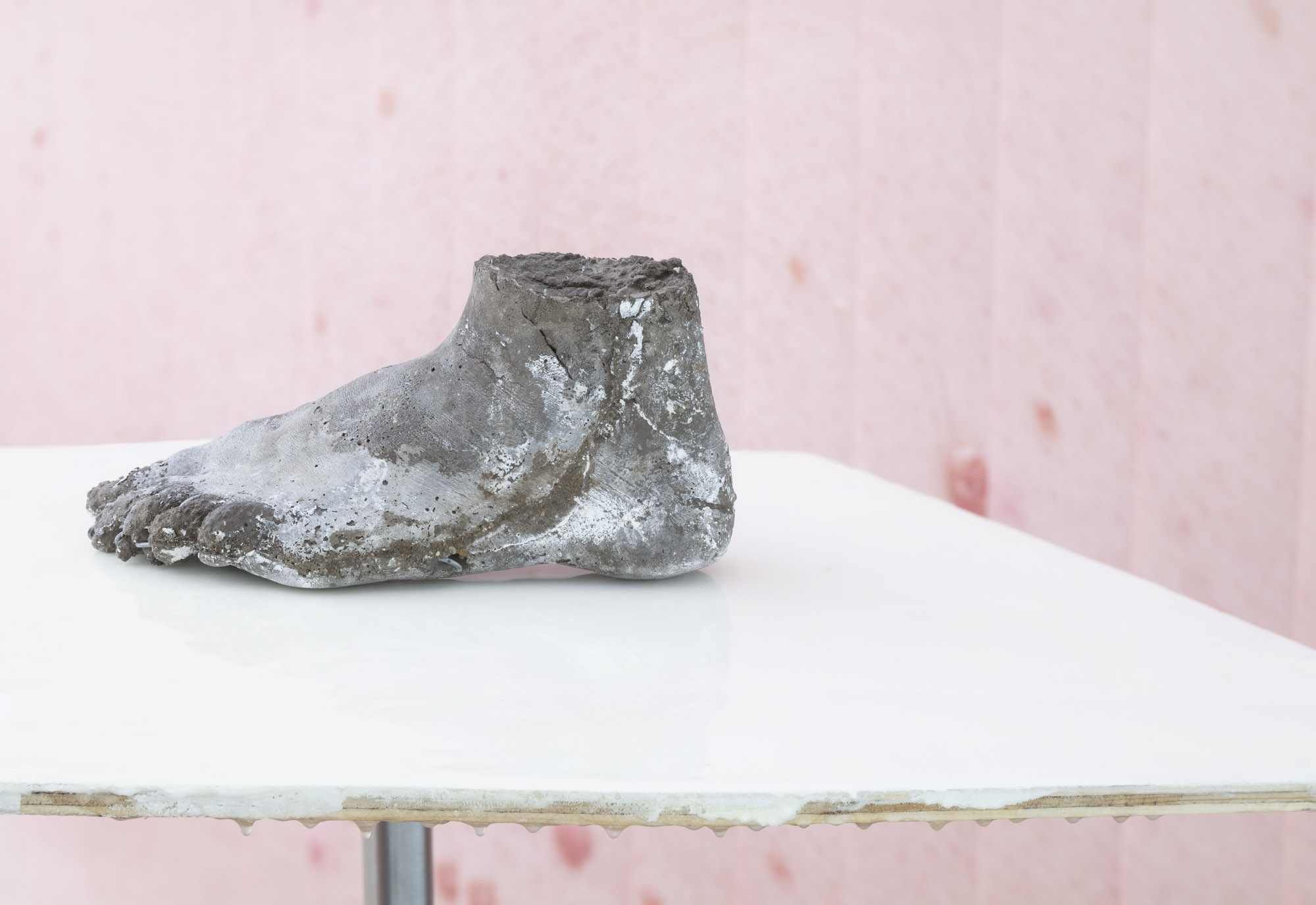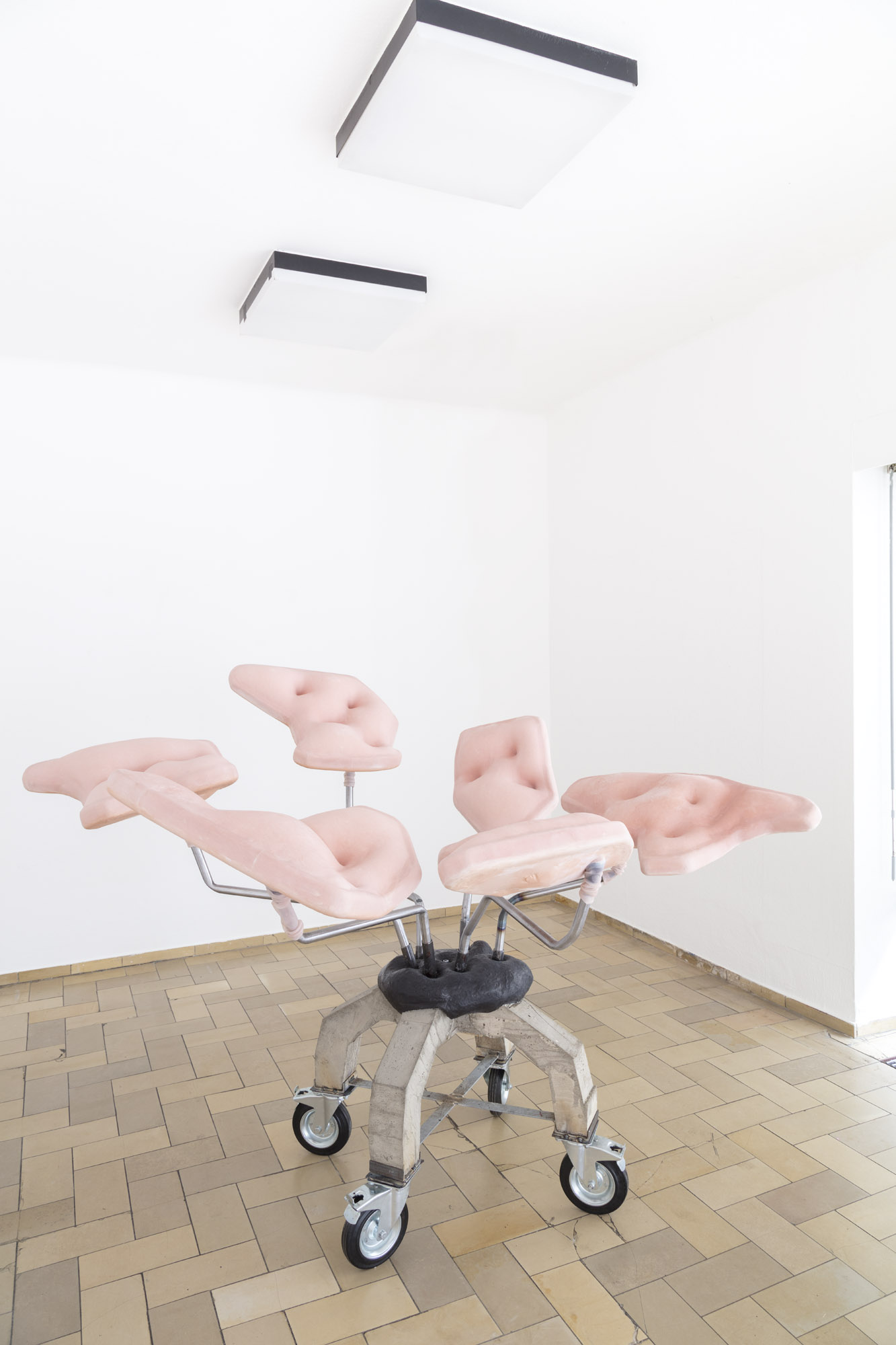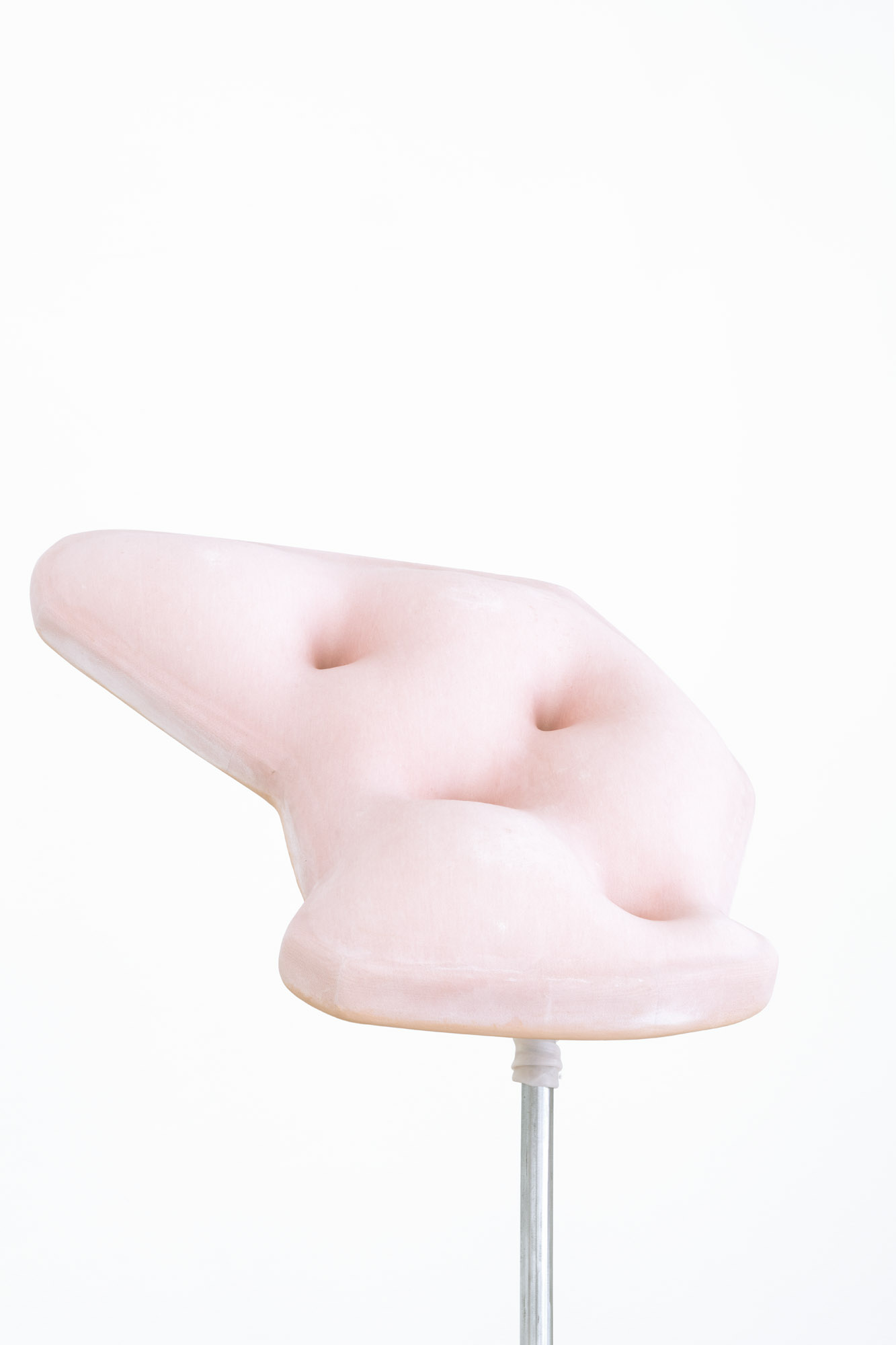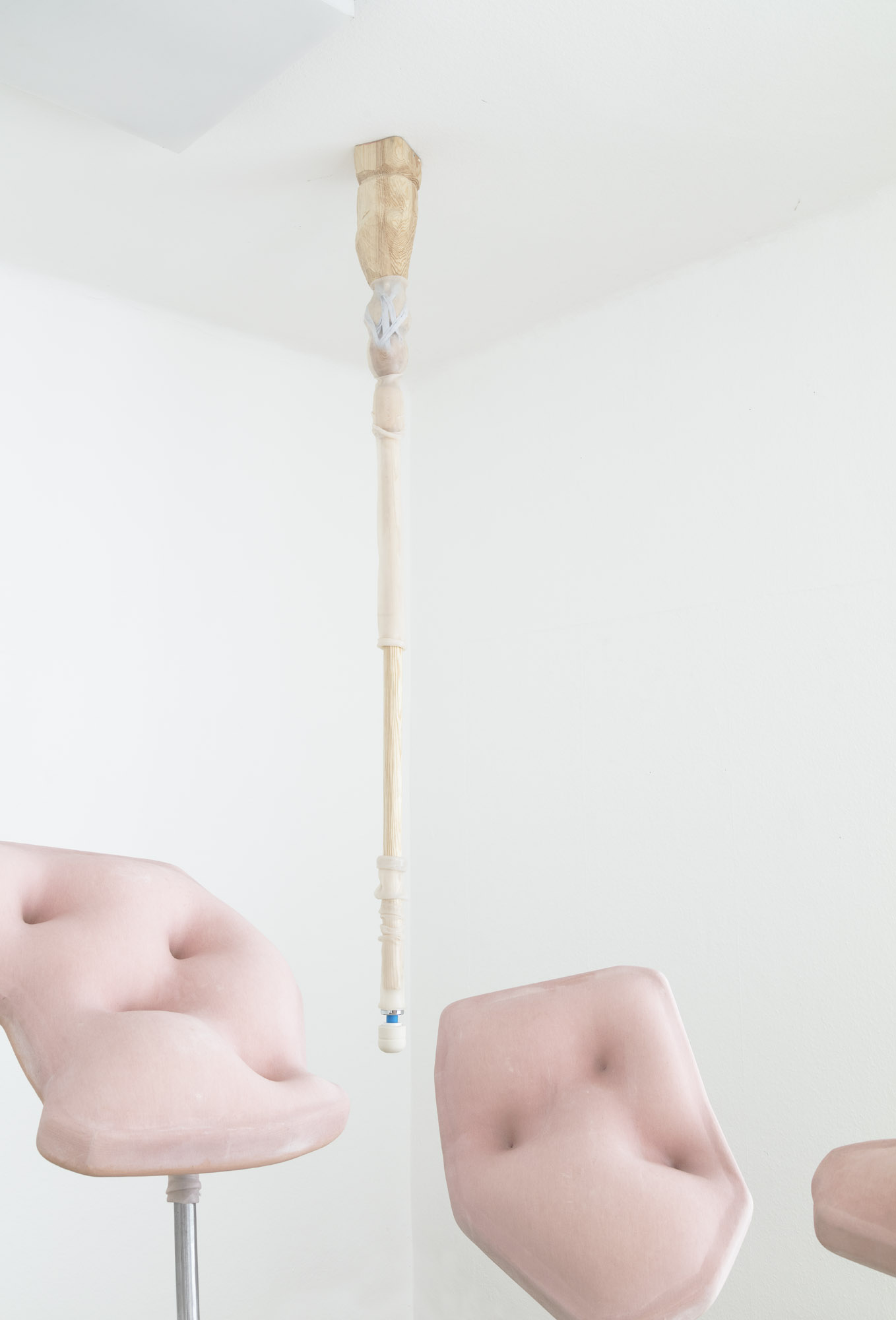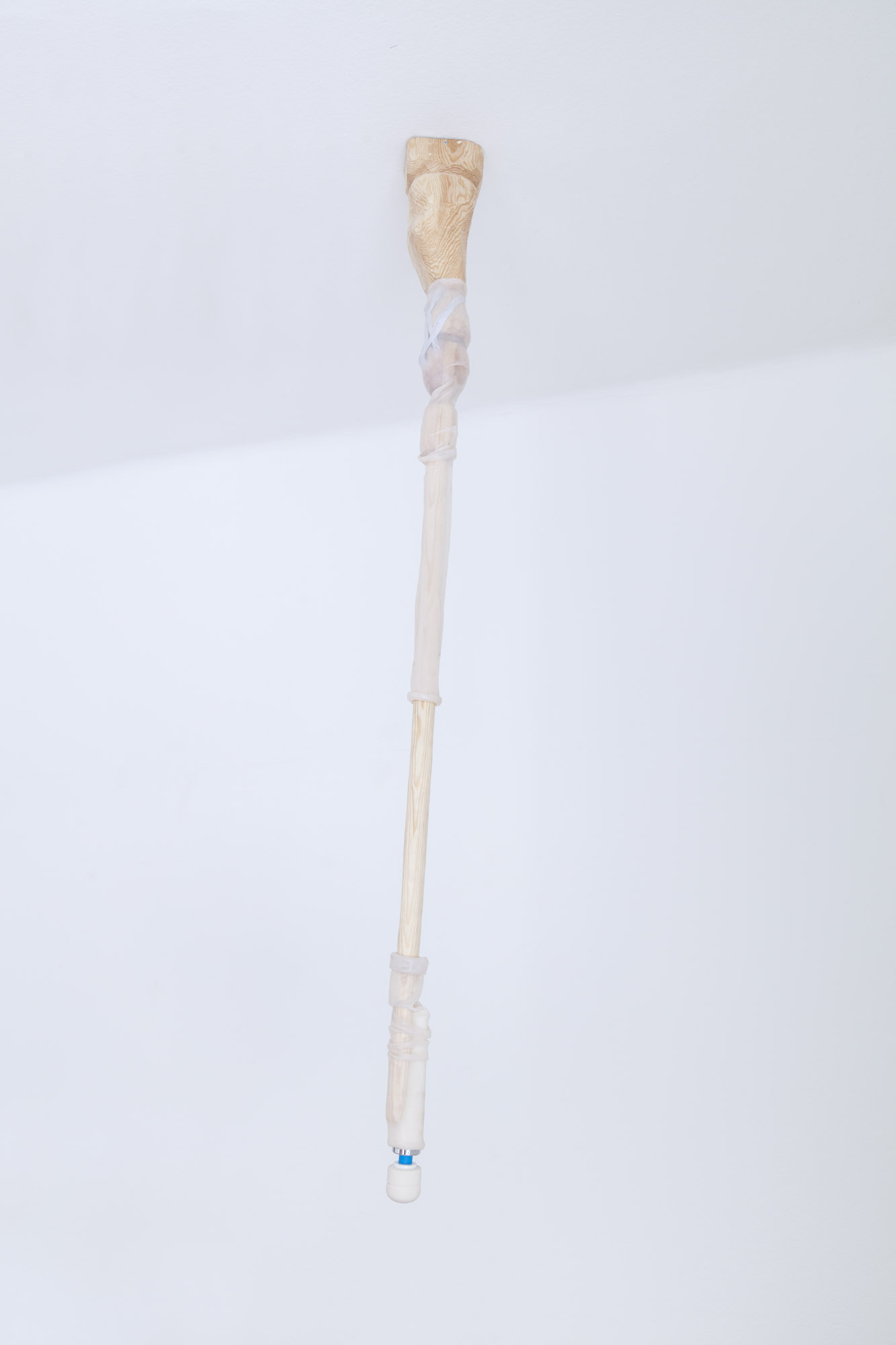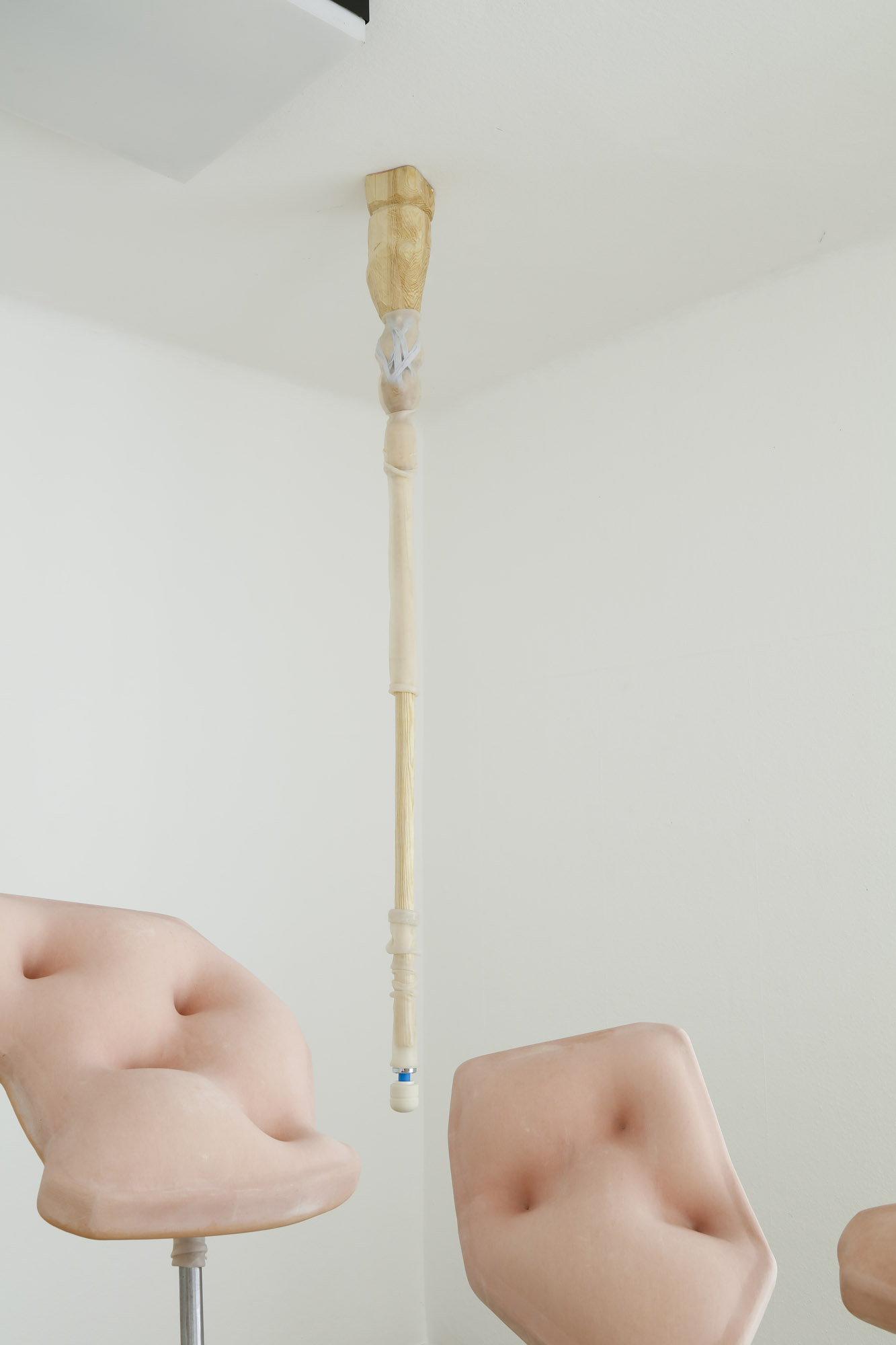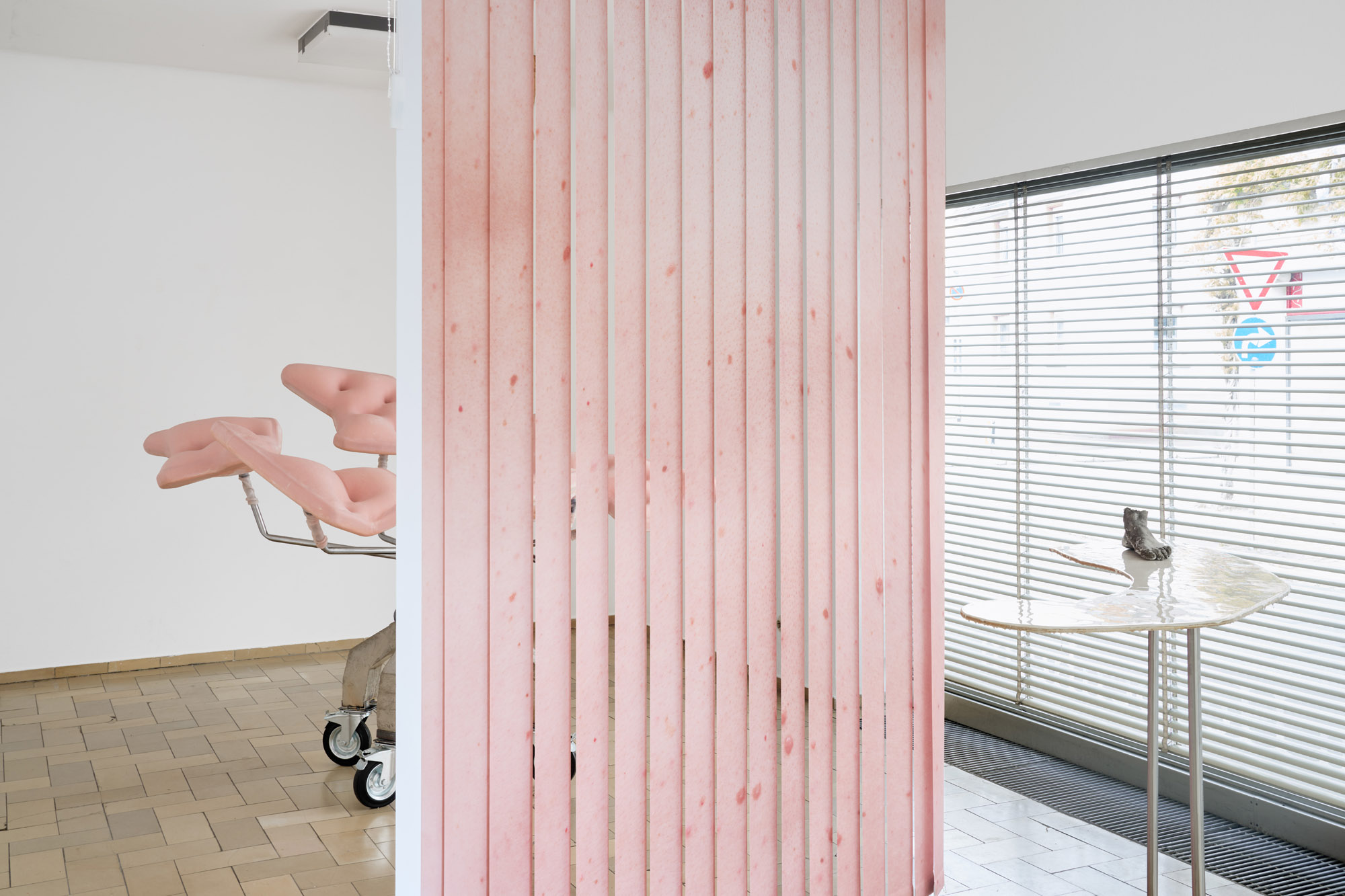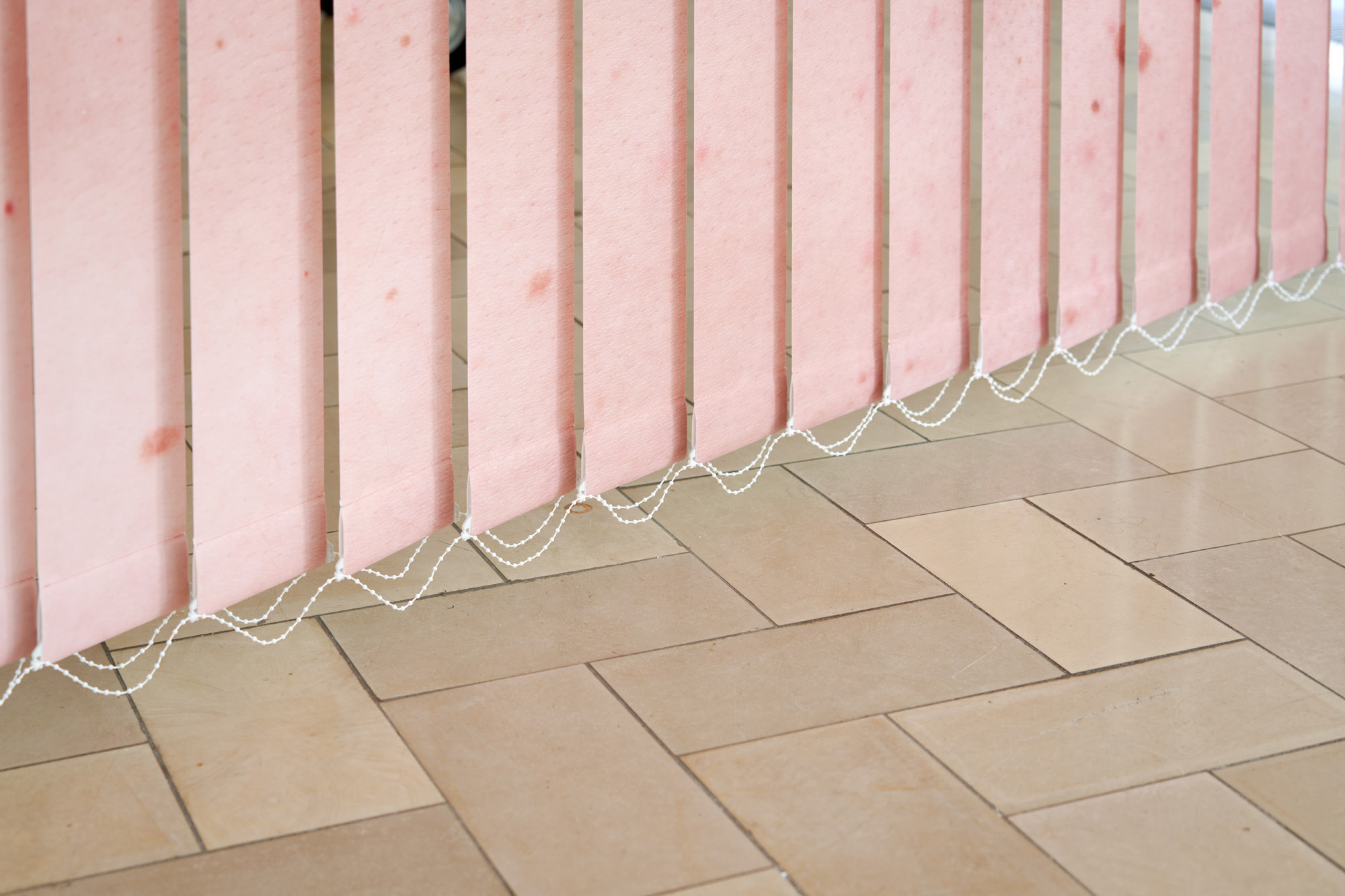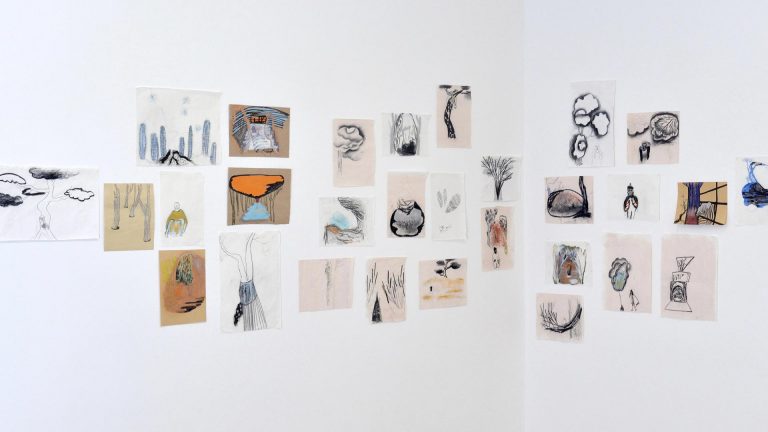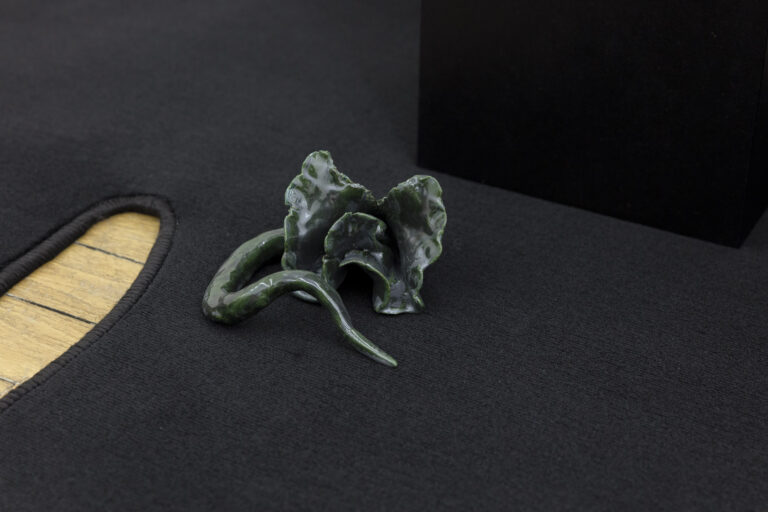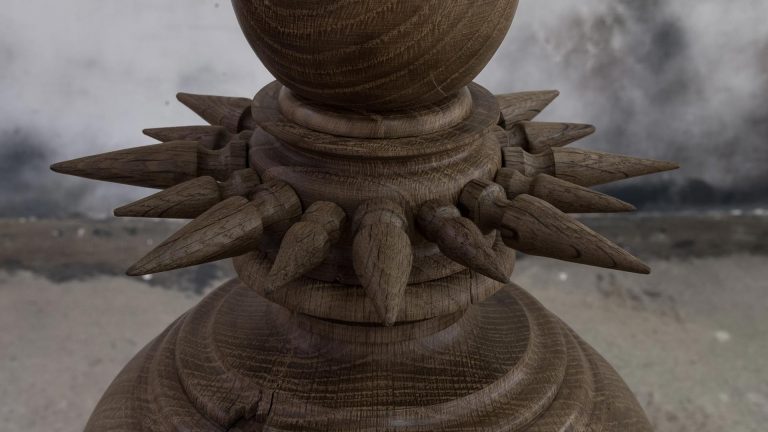Artist: Jens Kothe
Exhibition title: Studio__64646
Venue: Kunstverein Heppenheim, Heppnheim, Germany
Date: April 2 – 28, 2022
Photography: all images copyright and courtesy of the artist and Kunstverein Heppenheim
Ergonomic and Tactile Instructions: A Possibility
by Giovanna Manzotti
Imagine someone passes you the coordinates of Bahnhofstrasse 1, 64646, Heppenheim, Germany. As you approach, you can already see through the venetian blinds of the street-level storefront window a corpus of works deftly displayed in the one-room space of Kunstverein Heppenheim. Get closer and direct your gaze, loosely. Try to pin the scenery in front of you down any further, and you might take it as a familiar domestic milieu. Do you recognize it?
Call it a studio—you won’t be wrong.
Enter the space, breathe, and get your bearings. There’s no one else inside. Why not sit down on the stool just ahead of you and stretch out your legs?[1] Then, turn your head slightly to the left and delve into an image of a landscape with flowering green cacti.[2] Stare at it, but not for too long. The fleshy silhouettes and sensual contours might enchant you, but their spiny skin could be risky, unpredictable. Do you perceive any kind of bodily proximity?
Call it haptic expectation—you won’t be wrong.
Now stand up and take a peek at what appears to be a waiting room. From the outside, you should already have spotted a vertical element hanging from the ceiling, dividing the space into two sections.[3] It’s an office blind. Try to read the sketches on its latex-printed surface. Don’t they look like a map of spots and porousness, with nuances tending to pink? A thin membrane or a screen, a barrier, a boundary, evoking exposure, protection?
Call it skin—you won’t be wrong.
Take two steps back. Notice how this spotty, shifting facade in latex, with its penetrating architectural attitude, becomes more than mere background for what’s in front of it. Now come closer, again, and look. On the edge of a gently curved white counter balanced on two steel legs[4] lies a cast of a left foot.[5] Close your eyes and imagine fondling it. It’s a fragment, a relic, a residue of a laborious process. Are you aware of your body’s vulnerability? Then outline the counter’s edges with your fingertips, an erotic movement on the solidified dripping of epoxy resin and silicone that gives vigor to what might otherwise evoke a dissection table.
Call it intimacy—you won’t be wrong.
Reopen your eyes and go behind the blind. Here a group of six floating prosthetic elements begging to be touched evokes a fragmentary circular scenario, a carousel of pale pink cushions recalling irregularly shaped malleable mattresses, benches, big ears, orifices, or pieces of meat.[6] But there’s nowhere for the body to rest. Come closer. Do you smell the beeswax used to embed the steel arms into the base of this enigmatic object equipped with industrial wheels? By suggesting a surgical theater, each component here appears clinically clean, in a continuous dialogue with an imaginary and distant body.
Call it desire—you won’t be wrong.
Go around this and look upward. Like a prosthetic leg or a stage prop freely suspended from the ceiling, a modular pinewood staff[7] hangs between two cushions as if to brush against one of them and catch an inaudible noise locked inside the shape or the material. But no sound around. At the edge of the stick, a magic wand is sedimented with silicone and rubber. Performing in an environment with an almost surreal suspense, this tool looks like a microphone, a body massager, or a vibrator.[8]
Where are you?
In a massage studio? A tattoo studio? Or an artist’s studio?
It doesn’t really matter.
Now take a last look; it’s time to go.
———–
For his solo presentation Studio_64646 at Kunstverein Heppenheim, Düsseldorf-based artist Jens Kothe has created an installation in which underlying tactile structures emerge with tangible tension, shaping a visual experience that is fragmented, but held together by a stable, rhythmic, and coherent composition. The works on view—whose titles are enumerated in the footnotes—are witnesses in a scenery, actors in a studio-like situation that cultivates a kind of affective relationship with the viewer and the surroundings. By disrupting the binary logics of epidermal/visceral, primeval/plasticine, hardness/softness, organic/industrial, Kothe’s sculptural approach aims to trigger in the observer a one-to-one haptic stimulation, alluding to an atmosphere where the limits of corporeality and the technical constitution of the self spawn a picture where everyday objects, bodies, and environments resonate with notions of vulnerability, sensuality, seduction, security, materiality, postural, and the corporeal. Whether freestanding, clinging to the wall, or suspended from the ceiling, Kothe’s works evoke affective and tactile responses, echoing and reconfiguring associations of bodily functions, memories, and fragments in sculptural abstractions.
The “instructions” above are like whispered suggestions for exploring potential movements inside a space—metaphorically, a series of acts become extensions of the body itself. By acting in a context, absorbing it, thinking it, and elaborating it, our bodies—and the bodies of others—become aware of their own limits and abilities, all the way to feeling themselves sensitive and vulnerable again.
[1] Hocker, 2022, wood, ceramic, textile, silicone, screws, acrylic paint, 44 × 50 × 50 cm.
[2] Kakteen, Cabanas, 2022, fine-art print, 42 × 59.4 cm. Realized in collaboration with artist Helen Fux.
[3] Rückenstück, 2022, latex print on vertical blind, 310 × 200 × 5 cm.
[4] Theke, 2022, multilayer panel, steel, epoxy resin, silicone, pigment, 147 × 110 × 70 cm.
[5] Fuß, 2022, cement mortar, galvanized wire, size 39/40.
[6] Fleischkarussell, 2022, cement mortar, steel, silicone, industrial rollers, beeswax, pigments, textile, polyurethane, wood, acrylic putty, UV protective varnish, 210 × 165 × 180 cm.
[7] Magic Wand, 2022, pine wood, silicone, rubber, Magic Wand, 220 × 20 × 18 cm.
[8] The Magic Wand gained a cult following in the early 1970s for off-label use as a vibrator for clitoral stimulation.


